Development of the national theory of strategic offensive operations in the first post-war period
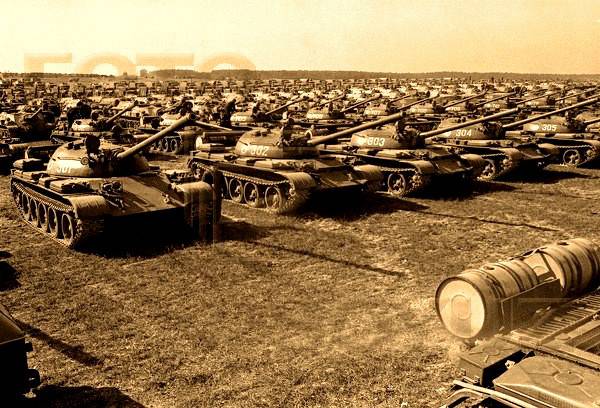
1945-1953 years entered history as the first period of the post-war construction of our armed forces and the development of national military art. He is a transient, pre-nuclear. However, the theoretical development of many issues of military art of that time, especially such an important one as a strategic offensive operation, was relevant throughout the past century, and many of them have not lost their relevance today.
What did they leave important in the theory of strategic offensive operations? For a start it is worth remembering the general situation of those years. The Second World War has just ended. The country was engaged in the elimination of the serious consequences of the war, restoring the economy, destroyed cities and villages. The armed forces were transferred to a peaceful situation, demobilized soldiers returned to the enterprises.
The war radically changed the balance of political forces in the world. The world socialist system was formed, which quickly gained momentum in its political, economic, scientific and technological development, its weight in solving international problems steadily increased.
Soon after the war, the Western powers, led by the United States of America, headed for isolating the USSR, creating a united front against our country and the socialist countries, surrounding them with a system of military-political blocs. The cold war and the arms race were unleashed. US using its monopoly on nuclear weapon, tried to blackmail the Soviet Union with the help of the so-called strategy of “nuclear deterrence”. With the formation of NATO (1949), the military danger for our country increased even more. The structure of this military bloc introduces West Germany, which turns into a springboard for preparing the war against the USSR and the countries of the Eastern bloc. NATO Combined Forces are being established. Wars are raging in Korea, Vietnam, Laos and a number of other countries.
With the creation in our country of atomic (1949) and hydrogen (1953) weapons, the power of the USSR and its allies increased. Rapid development received aviation, especially in connection with the introduction of a jet engine. At that time, light jet bomber Il-28, MiG-15, MiG-17, Yak-23 fighter jets, Tu-4 heavy bomber and Tu-16 jet bomber, which had high combat qualities at that time, were accepted for service. The first samples of missile weapons are created: R-1, R-2 and others. Serious modernization undergo Tanks: improved armor protection, maneuverability and firepower of medium (T-44, T-54) and heavy (IS-2, IS-3, T-10) tanks and self-propelled artillery mounts. The jet artillery (BM-14, M-20, BM-24 installation) is further developed, new models of heavy artillery (130-mm gun) and mortars (240-mm) appeared, recoilless guns with cumulative and high-explosive fragmentation were widely used charges of high armor penetration, increased the proportion of automatic small arms.
An important achievement was the complete motorization of the Ground Forces, the introduction of armored personnel carriers and high-traffic vehicles in them. Arms of the Air Defense Forces and the Navy, control and communications equipment, engineering equipment were further developed. In addition to technical development, domestic military science played a major role in strengthening the country's defense capability in those years. Her first task was to summarize the experience of the Second World War. At the same time, all aspects of military affairs were examined, including issues of military art. All the important operations of the Soviet troops and armed forces of other participants in the Second World War were carefully described and understood. On this basis, the theoretical problems of military construction and military art were developed. Special attention was paid to the development of the theory of strategic offensive operations (or operations of a group of fronts, as they were then called), in the theater of military operations (theater of operations) using conventional weapons. At the same time, questions of military art related to the conduct of actions in the context of the use of nuclear weapons were investigated.
Even then, many military theorists abroad sought to diminish the role of the Soviet Union in achieving victory over Germany, criticize our military strategy, prove its backwardness, inability to understand new complex issues related to the emergence of nuclear weapons, and convince the world community that level of the second world war. The speeches of G. Kissinger, R. Harthoff, F. Mikshe, P. Gallois, and others were especially distinguished. By the way, some of their works were translated and published in our country: G. Kissinger “Nuclear Weapons and Foreign Policy” M., 1959; F. Mikshe “Atomic Weapons and the Army” M., 1956; P. Gallois “Strategy in the nuclear age” M, 1962. In fact, there was no lag behind the Soviet military strategy, and even more so the military weakness of the USSR at that time.
Having atomic weapons, the United States and NATO as a whole in those years continued to contain large groups of conventional armed forces, consisting of ground forces, strategic and tactical aviation, the navy and air defense forces. Suffice to say that by the end of 1953 they numbered: personnel - 4 350 000 people (along with the national guard and reserve), ground forces divisions - 70 combat aircraft - more than 7000, heavy aircraft carriers - 19, destroyers - about 200, underwater boats - 123. At that time, the combined NATO forces included 38 divisions and more than 3000 combat aircraft. At the same time, the FRG began to deploy its army. These data suggest that the United States at that time relied not only on nuclear weapons, but on conventional aircraft. In this regard, the development of a strategic offensive operation in the Soviet military theory responded to the tasks of ensuring the security of our country and allies.
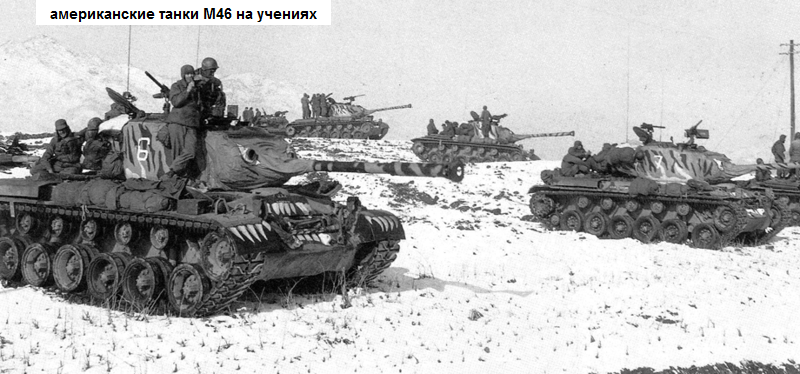
The strategic offensive operation (SNO) at that time was understood as joint actions of several fronts, formations and formations of the Air Force and other types of armed forces, carried out according to a single plan and under general guidance in the strategic direction or throughout the theater. Its objectives could be: the defeat of enemy operational-strategic groups in a particular direction or theater, the capture of strategically important areas and objects, the change in our favor of the military-political situation. At the same time, the results of such an operation should have had a significant impact on the course of the war or on one of its stages.
During the First World War, as it is known, the frontline offensive operation was the highest form of warfare. When conducting its fronts acted relatively independently, without direct interaction with neighboring fronts. Naturally, in such an operation, only operational scale objectives were achieved.
In the years of the civil war, there are cases when the two fronts carry out strategic tasks in a direction or theater, with more or less close cooperation (for example, in the summer of the 1920 of the year). It was the embryo of the SSS, which during the Great Patriotic War became the main and decisive form of military operations.
The most important factors that led to the emergence of such a form include: changes in the material base of the war (mass emergence of aviation, tanks, anti-tank and anti-aircraft weapons, more efficient artillery, especially reactive, automatic small arms, new controls, in particular, radio, mass introduction cars, tractors, etc.), which made it possible to create unions and connections with high maneuverability, great impact power and a significant range of actions; the increased scale of the armed struggle, the decisiveness of the goals of the war, the fierce nature of military actions; the need to unite for solving the strategic tasks of large masses of ground troops and aviation, conducting combat activities on a broad front; the possibility of centralized leadership of large groups of armed forces, concentrating their efforts to achieve the main strategic goals.
In the face of the clash of powerful adversaries with large armed forces, a developed economic and military potential, a vast territory, it was no longer possible to achieve serious military objectives by conducting small-scale operations (even front-line). There was a need to attract several fronts, the organization of their actions on a single plan and under a single leadership.
During the Great Patriotic War, Soviet troops successfully conducted many strategic offensive operations that enriched the art of war. The most prominent of them were: the counteroffensive and the general offensive near Moscow, Stalingrad and Kursk, the operations to liberate Left-Bank and Right-Bank Ukraine, as well as Byelorussia, Yassko-Kishinevskaya, East Prusskaya, Vistula-Oder, Berlin and others.
In the first post-war period, the conditions for conducting strategic operations have changed significantly compared with the last war. This entailed important changes in the nature and methods of their implementation. According to the views of that time, the new world war was seen as an armed clash of two powerful coalitions of states belonging to opposing world social systems. It was assumed that the overall goal of the war could be the defeat of enemy armed forces groups on land, sea theaters and in the air, undermining the economic potential, seizing the most important areas and objects, withdrawing from it the main countries participating in the enemy coalition, forcing them to unconditional surrender. A war could have resulted from a sudden attack by an aggressor or a slow “creep” through local wars. Regardless of the way the war began, the parties would have exposed the multimillion armed forces, would have mobilized all the economic and moral opportunities.
It was assumed that to achieve the ultimate political goals of the war would require the solution of a number of intermediate military and political tasks, for which a series of strategic offensive operations would be necessary. It was believed that the goals of the war could be achieved only by the joint efforts of all types of Armed Forces. The main of them were the Ground Forces, which bore the brunt of the struggle. The rest must conduct combat work in the interests of the Ground Forces. But at the same time it was assumed that the formations of the Air Force, Navy and Air Defense Forces of the country could solve a number of relatively independent tasks.
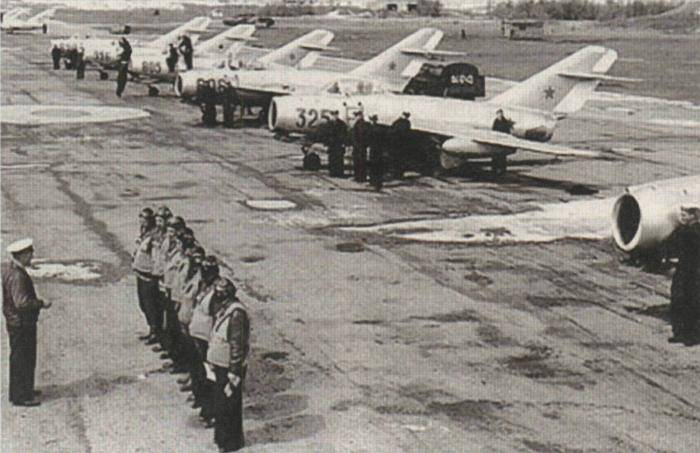
The main types of strategic actions were considered: strategic offensive, strategic defense, counteroffensive. Among them, strategic offensive operations were of paramount importance. The most important theoretical positions were reflected in the military press. The contribution to the development of questions of the strategic offensive operations of the Marshals of the Soviet Union, V. Sokolovsky, A. Vasilevsky, M. Zakharov, G. Zhukov, Army General S. Shtemenko, Colonel-General N. Lomov, Lieutenant-General E. Shilovsky, S Krasilnikova and others.
The theoretical work emphasized that the AtoN is the main, decisive form of the strategic actions of the Armed Forces, as only as a result it can destroy the enemy’s strategic groupings in the theater, seize the vital territory, finally break the enemy resistance and ensure victory.
The scope of the SSS was determined from the experience of conducting them in the last period of the Patriotic War. It was assumed that along the front a similar operation is capable of covering one or two strategic directions or the entire theater of operations, which can be carried out at the entire depth of the theater. It was assumed that in some cases, to solve all strategic tasks, it would be necessary to carry out two or more successive operations in depth. The following could be involved in conducting the SSS: several front-line unions with reinforcements, one or two air armies, air defense troops of the country, airborne formations, military transport aviation, and fleets on coastal directions.
The planning of strategic offensive operations was entrusted, as in the war years, to the General Staff. In the plan of operation, the purpose of its implementation was determined, i.e. the grouping of forces (the number of fronts), the direction of the main strike and strategic tasks for the group of fronts, as well as the approximate timing of its implementation. The fronts received offensive lanes 200-300 km wide. In the front line, one or several breakthrough sections were planned, with a total length of no more than 50 km, on which strong strike forces of ground forces and aviation deployed. The first echelon armies were cut into offensive lines 40-50 km and more wide, breakthrough sections up to 20 km wide, and combat missions were set to a depth of 200 km. Infantry corps operating in the direction of the main attack of the army were set to advance strips up to 8 km in width, and divisions to 4 km. At the breakthrough sites, it was planned to create a high density of forces and means: guns and mortars - 180-200, tanks and self-propelled guns - 60-80 units per km front; density of bomb strikes - 200-300 t per square. km
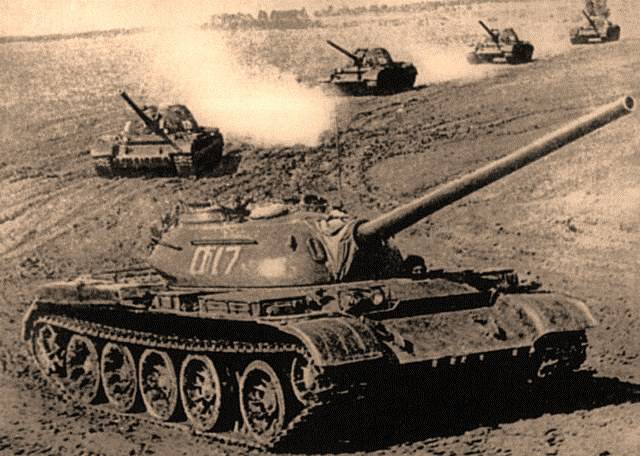
It is easy to notice that these norms differed little from the norms of the operations of the last period of the Patriotic War (Byelorussian, Yassy-Kishinev, Vistula-Oder, etc.). At the breakthrough sites, large forces concentrated with their low density on the passive ones. Before the attack, artillery and air preparation was planned for up to one hour or more, which was set depending on the strengthening of the enemy defenses. The attack of the troops was to be accompanied by a shaft of fire (single or double), to the depth of the first line of defense of the enemy and attack aircraft.
Special importance was attached to the development and mastering of the methods of conducting strategic AtoN. Most often they began with the conduct of air operations to gain air superiority. It was planned to engage one or two air armies, the country's Air Defense Forces, long-range aviation, under the unified leadership of the Air Force commander or one of the front commanders. The focus was on the defeat and destruction of a group of tactical aircraft on airfields and in the air. The main efforts were directed at the defeat of the bomber and attack aircraft, but actions were planned against the fighters. It was also planned the destruction of airfields, ammunition depots and fuel, the suppression of the radar system. The total duration of the operation was determined in two or three days.
Simultaneously with the operation to gain air supremacy, or soon after, military operations of the fronts unfolded. Three main forms of conducting SSS were allowed: encirclement and destruction of enemy groups; dissection of a strategic grouping; fragmentation of the strategic front and the subsequent destruction of isolated groups.
Surrounding and destroying an enemy grouping was considered the most effective and decisive form of conducting a strategic operation. Therefore, she was focused on theoretical studies and practical exercises for operational training. When conducting operations in this form, two blows were made in converging directions, or one or two covering blows while simultaneously pressing the enemy grouping to a natural barrier. It was also possible that crushing blows in the initial stages of the operation. In both cases, a rapid development of the offensive in the depth and in the direction of the flanks was envisaged to surround the main enemy grouping. At the same time it was planned to dissect and destroy the surrounded group. The use of large tank (mechanized) formations and formations and air blocking of the encircled grouping was considered to be an indispensable condition for achieving success in conducting an environmental operation.
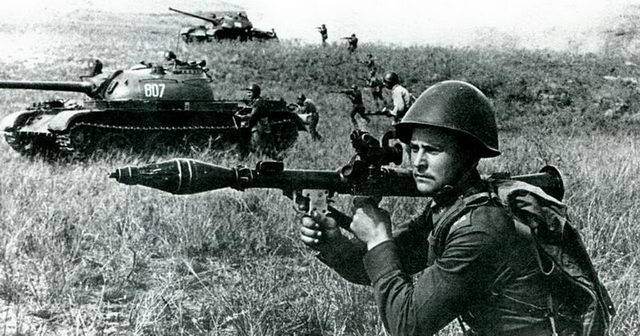
Dissecting a large enemy force was also considered an important form of strategic offensive operations. It was achieved by powerful strikes of interacting fronts across the entire depth of the location of the surrounded enemy, with its subsequent destruction in parts. The success of the operation carried out in this form was ensured by the massive use of tank forces and aviation, the development of offensive operations to a greater depth in the most important direction and high maneuvering by all means and forces.
The crushing of the enemy strategic front was achieved by a series of powerful blows in several sectors on a broad front, with the further development of the offensive in parallel and even divergent directions. This form provided a more hidden preparation of the operation and the concentration of its troops in the starting position. It also hampered the maneuvering of enemy forces aimed at repelling our offensive. However, this form required relatively large forces and means to ensure the required density at several breakthrough sites.
It was assumed that the offensive operations of the fronts could begin and develop with a breakthrough prepared by the enemy defense; breakthrough hastily organized defense; breakthrough fortified areas. The possibility of reciprocal battles during the entire period of the operation was also not excluded. The breakthrough of the enemy defense to the depth of the main line of defense was assigned to rifle divisions. Mechanized and tank formations were used in the first echelon only in case of a hastily organized defense of the enemy. The attack was carried out by the first echelon divisions with the support of tanks, artillery and assault aircraft. The mechanized divisions usually constituted the second echelon of the infantry corps and ensured the completion of the breakthrough of the main enemy defense line (its depth was 6-10 km). The breakthrough of the second defense zone (it was built in 10-15 km from the main defense zone) was envisaged by the introduction of the second echelon of the army into the battle, it was usually made up of a rifle corps. It was considered advantageous to break through the second lane on the move or after a short preparation.

Thus, the tactical zone of enemy defense was planned to be overcome in the first days of the operation. Not excluded and options. In any case, the formations and units attacked in combat formations, the infantry in foot chains behind tanks with the support of escort weapons. Artillery supported the offensive by the method of a shaft of fire or a consistent concentration of fire. If it was not possible to break through the enemy defenses in depth, the artillery was pulled up and a short artillery preparation was carried out. The assault aircraft, acting in small groups (units, squadrons), had to continuously support the offensive by machine-gun and artillery fire and bombing. With the introduction of jet combat vehicles with high speed and maneuverability, methods of aviation support have changed: the aircraft could no longer be in the air above the battlefield, like helical attack aircraft, they inflicted short fire strikes on the identified enemy resistance centers ahead of the advancing troops. Bomber aircraft operated on more powerful resistance centers in depth, on reserves, airfields and other objects. The tactics of fighter aviation to provide air cover for troops from attacks by enemy aviation also changed: it did not cover attacking troops by deflecting in the air, but acted upon a call or by the method of “free hunting”.
For the development of a breakthrough into the operational depth, the mobile front group was intended, which was usually composed of a mechanized army, including mechanized and tank divisions. The introduction of a mobile group into battle was envisaged after the enemy’s tactical defense zone was broken through, i.e. on the second day of the operation, in a band from eight to twelve kilometers, with the support of artillery and aviation. Serious attention was paid to the comprehensive provision of a mobile group, especially engineering. After entering the battle, the mechanized army of the front had to make a rapid rush into the depths, boldly break away from the main forces, smash the enemy’s reserves, close the encirclement ring, interacting with mobile groups of neighboring fronts and air assault forces, create an internal environmental front or develop success on the external front.
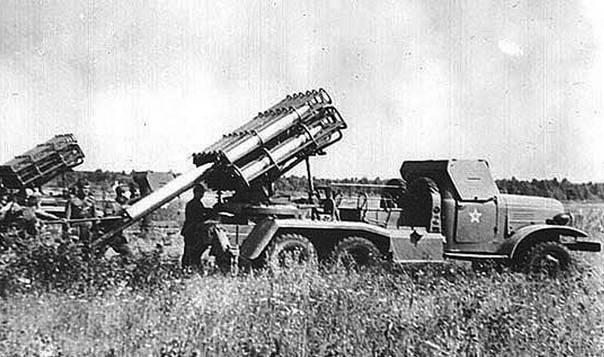
In the area of the encirclement of the ring of the environment, the landing of an airborne landing, most often an airborne division, was envisaged. Airborne assault forces were also planned to be used to capture bridgeheads and ferries, sections of the seashore, islands, important objects, airfields, road junctions, control points, etc. The landing of an airborne assault force was represented as a complex operation, often on a strategic scale, in which, besides the airborne troops, rifle or mechanized formations, military transport, front-line and long-range aviation could participate. The landing force could be deployed in the air in one or several echelons. Before disembarking, aviation preparation was planned with the aim of suppressing air defense and enemy reserves in the landing area.
The actions of the landing began, as a rule, from dropping a parachute train and landing gliders in order to capture airfields and landing sites. In the future, could land the landing echelon. The airborne assault force was to conduct active, maneuverable military operations and hold the intended targets or areas until the front troops approached. At the same time he was supported by aviation. In the course of the actions, the landing forces could be amplified by rifle or mechanized troops, supplied with weapons, ammunition, etc.
When conducting navigational aids in the coastal direction, important tasks were assigned to the fleet, which carried out its operation in collaboration with the coastal front. Forces fleet supported the advancing troops, destroyed the forces of the enemy fleet and did not allow their attacks on our troops, landed marines, together with the troops captured the straits and conducted anti-landing defense of the sea coast. In addition, the fleet was entrusted with the task of disrupting the enemy’s maritime transport and ensuring their transport in the sea. Along with this, relatively independent operations were envisaged, using mainly submarines to disrupt communications and defeat enemy naval forces.
Part of the SSS was the actions of the Air Defense Forces of the country deployed in this theater. They were assigned the task of defense against enemy air strikes of the most important objects of the frontal zone, communications, groupings of troops (second echelons and reserves), airfields and fleet forces, rear services, and also cover airborne assault forces.
These are the basic tenets of the theory of the preparation and conduct of strategic offensive operations that were developed in 1945-1953. They fully met the level of development of military affairs and the needs of national security. This rather harmonious theory took into account the entire experience of the Second World War.
Sources:
Zolotarev V. History of military strategy of Russia. M .: Polygraph Resources, 2000. C.542-580.
Zakharov A. The Theory of Strategic Offensive Operations in the Post-War Period. // Military Thought. 1979. No.4. C.32-42.
Kapustin A. Soviet military strategy after the Great Patriotic War. // Soviet military review. 1980. No.4. C.44-48.
Cherednichenko M. The development of the theory of strategic offensive operations // VIZH. 1975. No.8. C.38-45.
Reznichenko V., et al. Tactics. M .: Voenizdat, 1987.C.247-290
Information